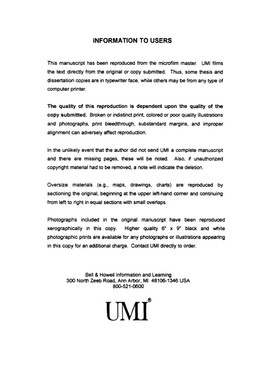| dc.contributor.advisor | Crawford, Kenneth C., | en_US |
| dc.contributor.author | Brotzge, Jerald Andrew. | en_US |
| dc.date.accessioned | 2013-08-16T12:31:11Z | |
| dc.date.available | 2013-08-16T12:31:11Z | |
| dc.date.issued | 2000 | en_US |
| dc.identifier.uri | https://hdl.handle.net/11244/6049 | |
| dc.description.abstract | Results outline appropriate procedures for limiting instrument and system error in measurement of the surface energy budget. A systematic error was identified from an examination of closure at ten OASIS sites, and a comparison between an EC and Bowen ratio system recognized several specific problems. Problems with closure were found limited to measurement of the latent heat flux, and several reasons for the underestimate in latent heat flux were identified. | en_US |
| dc.description.abstract | Radiative energy incident upon the earth's surface is either absorbed by the earth, reflected back to the atmosphere, or converted into sensible (SH) and latent heat (LH) fluxes. This principle of conservation of energy defines the surface energy budget, Rn = SH + LH + GH where Rn is net radiation and GH is the ground heat flux. A common standard for representing the accuracy of measurement of the energy budget is defined by the degree of "closure" (C) as defined by a percentage: C=SH+LH Rn-GH*100% | en_US |
| dc.description.abstract | The OASIS Project became operational 1 January 2000 and permits measurement of net radiation and ground heat flux as well as sensible and latent heat fluxes via eddy correlation at ten Mesonet sites across Oklahoma. In this dissertation, the closure issue is investigated using over 5 million observations collected during a one-year period from the OASIS and ARM projects. Instrument error, a mismatch in source area, horizontal flux divergence, surface heterogeneity, and fetch are examined as possible sources of error. | en_US |
| dc.description.abstract | Eddy correlation systems provide the only direct method for independently measuring sensible and latent heat fluxes. Unfortunately, measurements using eddy correlation (EC) systems often have failed to close the energy budget (Rn ≠ SH + LH + GH). Previous field experiments such as FIFE, Monsoon-90, and SGP-97 have consistently underestimated closure. This lack of closure casts doubt on the accuracy of EC measurements. A systematic error in measurement of the surface energy budget has profound implications for model and satellite verifications. The exact cause(s) for this systematic underestimate in closure is unknown. | en_US |
| dc.format.extent | xii, 208 leaves : | en_US |
| dc.subject | Convection (Meteorology) | en_US |
| dc.subject | Physics, Atmospheric Science. | en_US |
| dc.subject | Surface energy. | en_US |
| dc.subject | Heat Radiation and absorption. | en_US |
| dc.title | Closures of the surface energy budget. | en_US |
| dc.type | Thesis | en_US |
| dc.thesis.degree | Ph.D. | en_US |
| dc.thesis.degreeDiscipline | School of Meteorology | en_US |
| dc.note | Source: Dissertation Abstracts International, Volume: 61-09, Section: B, page: 4777. | en_US |
| dc.note | Adviser: Kenneth C. Crawford. | en_US |
| ou.identifier | (UMI)AAI9988514 | en_US |
| ou.group | College of Atmospheric & Geographic Sciences::School of Meteorology | |
